Lost Arts: 8 Vintage Homemaking Skills That Still Matter
Inside: A look at old-fashioned homemaking skills that are still useful in the modern world. From growing your own vegetables to baking your own bread, these are frugal, fun, and fulfilling.
Modern conveniences and busy schedules have made housekeeping faster and less hands-on. And don’t get me wrong—that can be a good thing. But we’ve lost some of the fun and romance of keeping house.
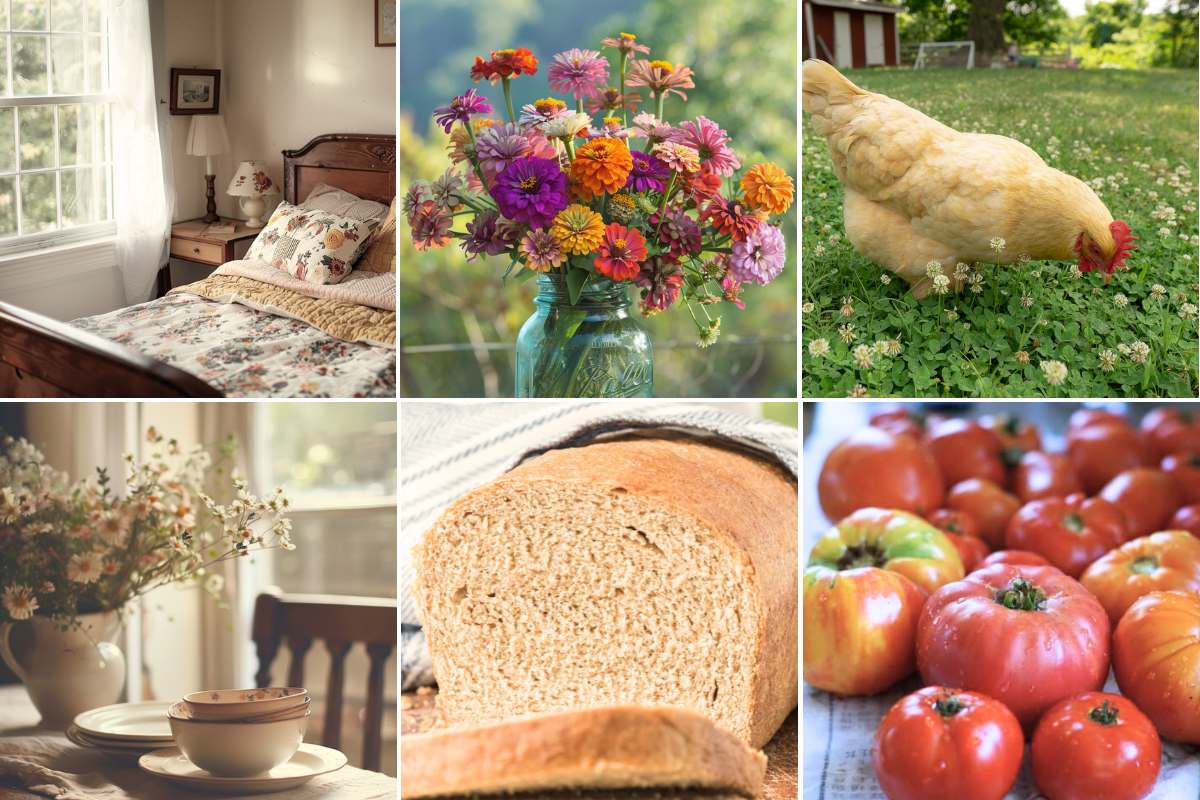
Sure, a package of sliced bread can feel like the best thing since…you know. But once you’ve watched dough rise in a pretty bowl on your countertop and brushed a browned loaf with butter that you pulled out of the oven, you’ll realize that convenience isn’t everything.
heirloom homemaker email course
A 5-day series straight to your inbox to help you create a beautiful home life.
No logins, no guilt, no overwhelm.
Promise.
I promise to keep your email address safe. Unsubscribe at any time
These vintage skills are still useful today, wherever you live. I hope you find a few that interest you and get started.
1. Start a Vegetable and Cut Flower Garden
Decades ago, all homes had vegetable gardens, even city homes. Fresh produce was expensive to buy, homes were on larger lots, and growing your vegetables just made sense.
Today food is less expensive to buy, and we have less time and space. Gardening is currently enjoying a resurgence, but many people are likely to try it and give it up or see it as a hobby.
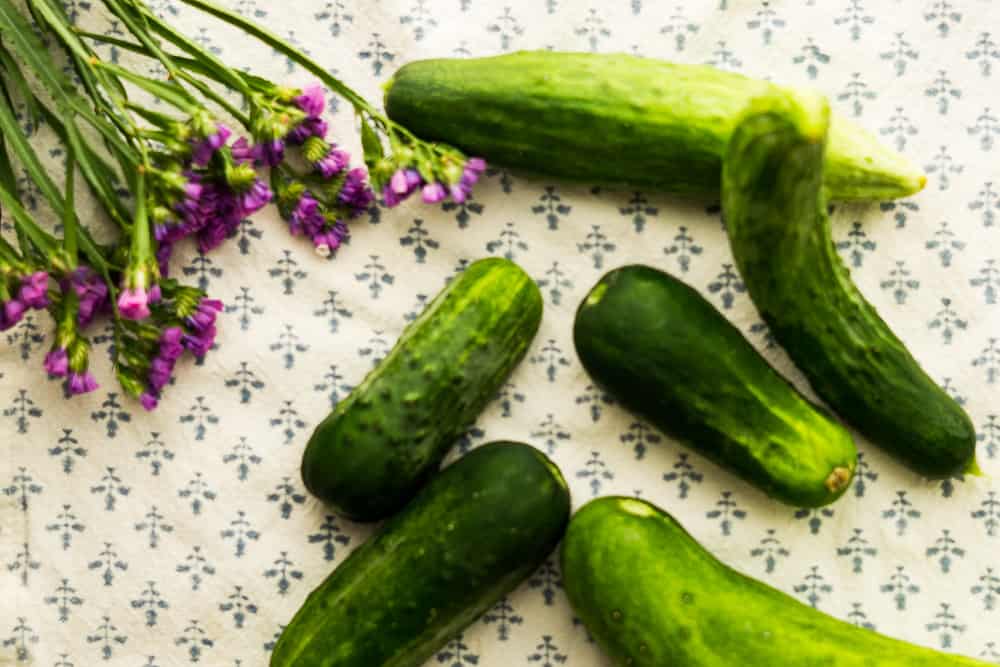
For the old-fashioned homemaker, keeping a home garden was a given. That doesn’t mean that everyone was living off the land! Absolutely not. But vegetable gardens were expected to supplement the family’s diet and help save a little money.
It is debatable whether gardening still saves money. But as food prices increase, it seems more and more valuable, and it’s a skill that you have to build over time. Why not start small and learn what you can?
Don’t forget about growing cutting flowers as well, which are the perfect way to give your house charm and coziness in the spring and summer. It’s like growing your own decor. No more seasonal junk.
If you have any amount of outdoor space at all, gardening is a worthy activity. Everyone can have a few herbs in pots at least.
2. Preserve Seasonal Food
Hand in hand with gardening is preserving the harvest. Canning, dehydrating, and other ways to preserve food will help you save money and feel productive,
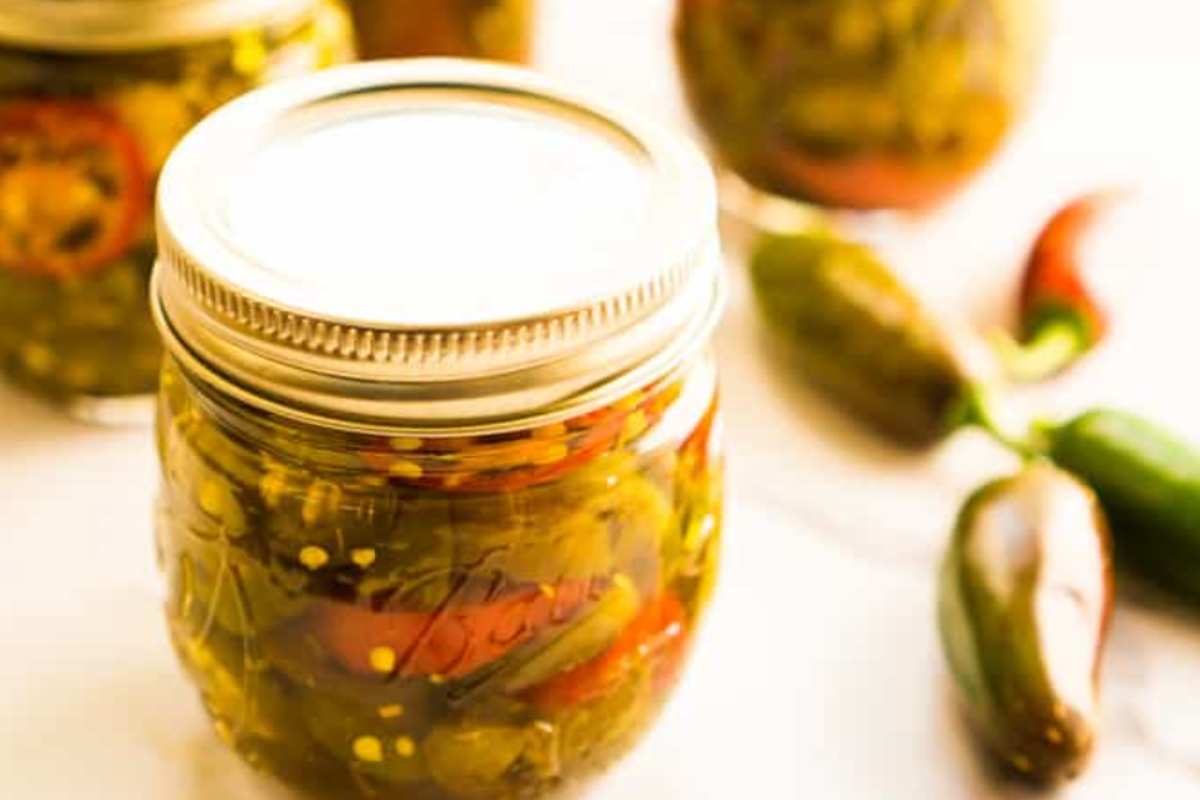
Even if you don’t garden, you can preserve food. (Remember Blueberries for Sal and the mother going foraging for wild blueberries to can?) You can frequent farmer’s markers, ask friends for produce, and even preserve grocery store items. This can actually be very cost-effective when you buy good sale prices on foods you really eat.
Even though canning is one of the most important traditional homemaking skills, make sure you are using modern resources for canning recipes and techniques. A lot has changed over the years in terms of best practices for canning, and many old-fashioned recipes are no longer considered safe, unfortunately.
3. Bake Your Own Bread
Baking bread is one of the best things on this list because anyone can do it. Homemade bread is so much better than store-bought and it definitely saves money.
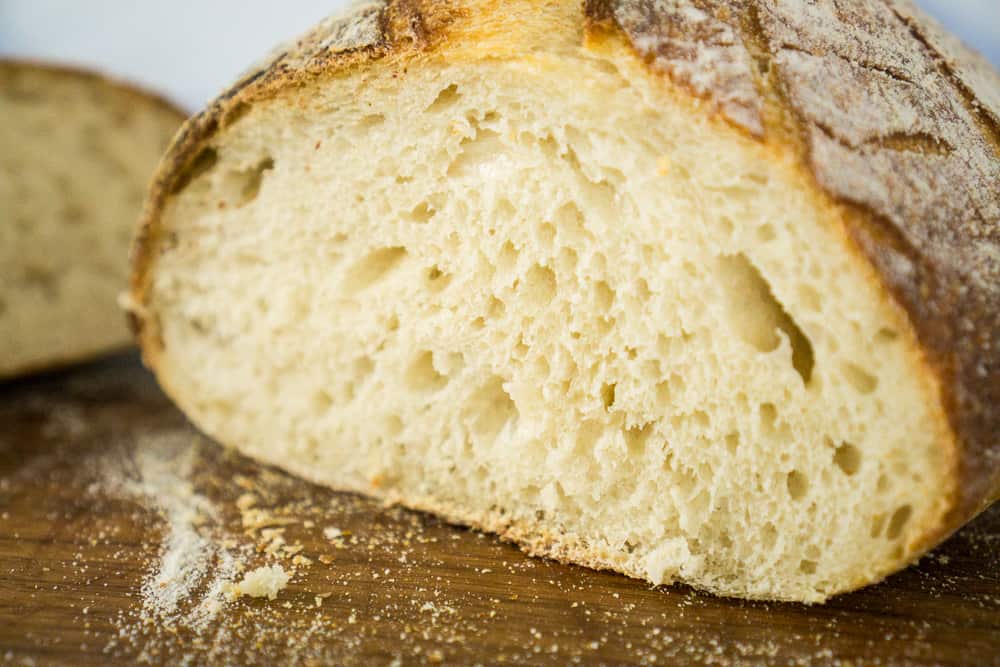
Even though it takes quite a bit of time to bake bread, most of it is hands-off time and it can easily be fit into the rhythm of your day. Bread baking is something that has become much easier with modern inventions like bread machines and instant yeast.
But it is good to know how to do it without any of these things too. Once you get used to yeast breads, branch out into sourdough and kneading by hand. They are timeless skills that help you reduce your dependence on store-bought supplies and become a more frugal homemaker.
4. Cook From Scratch (Everything, But Especially Dinner)
Old-fashioned homemakers did not have the luxury of any mixes or pre-made meals. Everything was made from scratch out of necessity. But keep in mind that most meals were very simple (like beans and cornbread for dinner simple).
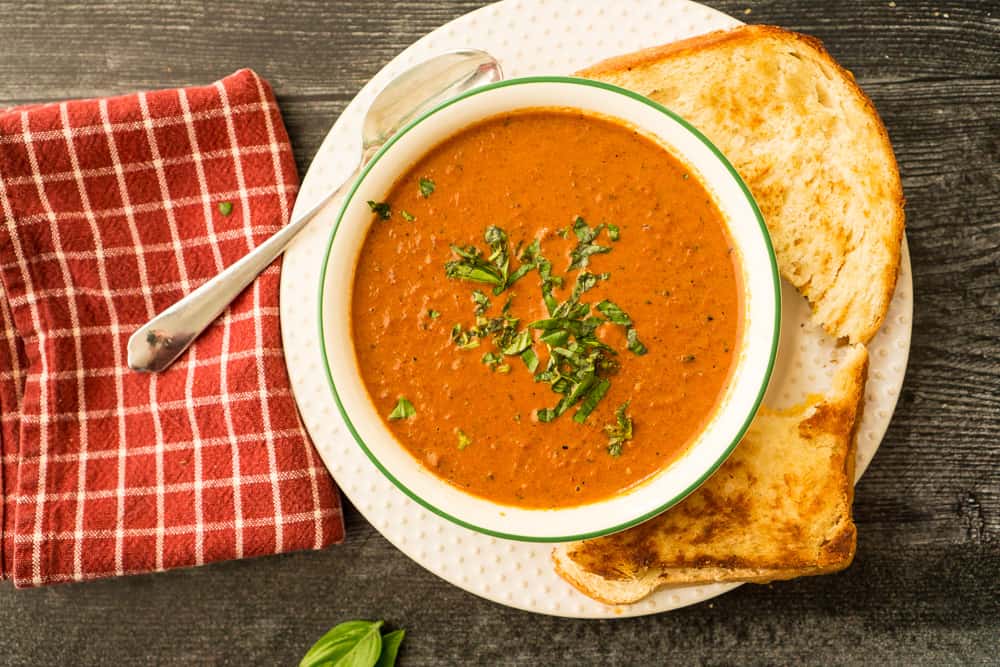
When you transition to cooking everything from scratch, it’s best to get there slowly. First, stop buying expensive things, like fully prepared meals. Then, give up boxed mixes and instant side dishes. Then, work up to making even more things yourself, like mayonnaise and spice mixes (if you want to!).
Now, this doesn’t mean you can’t use modern conveniences. If you have a deep freezer, slow cooker, or pressure cooker, take advantage of them!
5. Learn to Plan Ahead
Running a household has a lot of moving parts. And often, we get so caught up in the details of day to day work, like picking up toys and making dinner, that we forget bigger picture items.
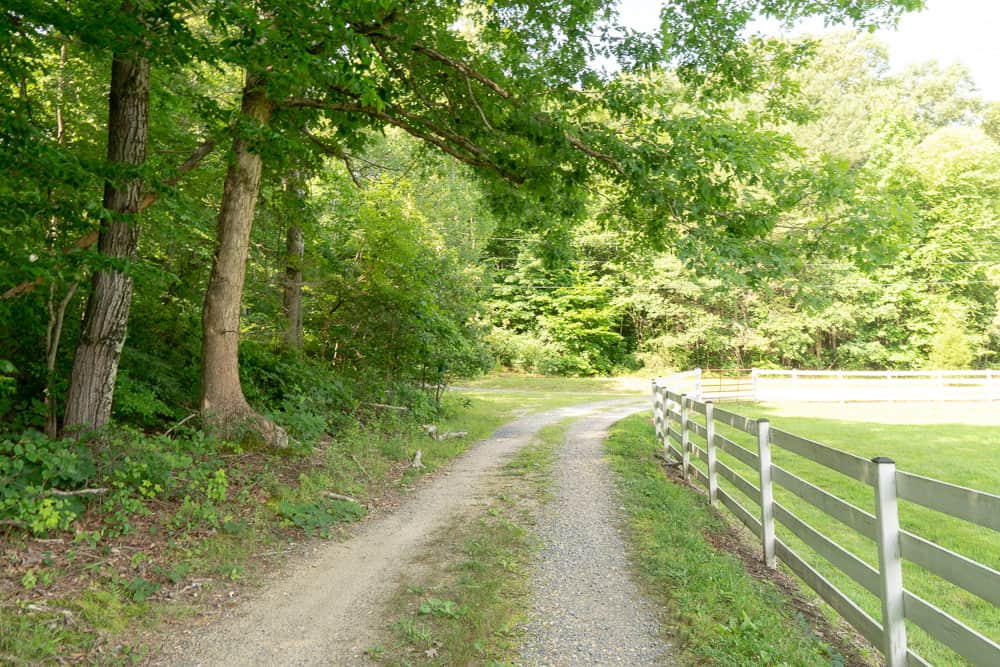
In the past, most women did not plan elaborate events or vacations, but their day-to-day life followed a routine, as did their weeks. And they were always planning for what was coming up. A century ago, if a family had a lot of money, this might be the only task of the homemaker, and everything else was done by servants!
Think of the term “managing” the home. That’s what this is. Thinking about what is needed, ahead of time, and being ready.
Don’t forget to plan downtime for yourself and your family as well.
6. Sew Basic Household Items
I have attempted sewing many a time but am terrible at it. I’ve managed to make a few pillow covers and curtains, and there’s nothing like admiring your own handiwork (even when it isn’t perfect!).
Sewing does not save you much money, if any, unless you are very clever about reusing fabric and getting deals. But it’s such a satisfying and productive hobby! And if you really think about why clothing and other fabric goods are so inexpensive, it is definitely worth the effort and expense to make nicer quality, longer-lasting things.
7. History Keeping
Don’t forget about this, as it is one homemaking skill that will outlive you, long after every loaf of bread is eaten. In the past, homemakers were able to simply save photographs, letters, and the family Bible. Every photograph and letter was likely to be special.
But today, our homes are filled with junk papers and with so many things being digital, devoid of special photos and letters. So it’s our job to make memories and record history more consciously. Don’t just keep your pictures trapped on your phone, get them printed and hang them up!
Consider an easy journal with a few lines a day so that you have a real memento you can pass down.
8. Make Your Own Soap
This is one that people think is really weird! But it is so satisfying and simple that everyone should try it at least once.
Soap making might seem like an unusual skill, but it’s a surprisingly simple and satisfying craft that offers numerous benefits beyond just getting clean. Old-fashioned soap makers often utilized readily available ingredients like animal fats and wood ashes, crafting soaps that were gentle on the skin and uniquely tailored to their needs.
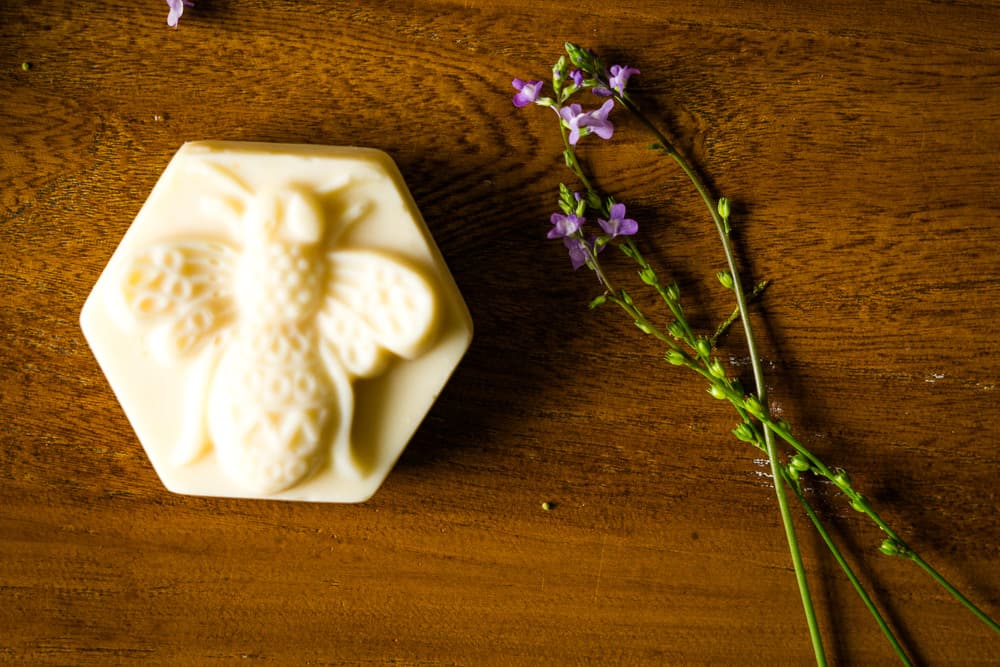
Today, soap making allows you to:
- Save Money: Handmade soap can be significantly cheaper than high-quality commercial soaps, especially if you buy ingredients in bulk or utilize foraged materials.
- Customize: You have complete control over the ingredients, allowing you to create soaps tailored to your skin type and preferences, whether that’s using goat milk for a creamy lather, essential oils for aromatherapy benefits, or natural colorants for visual appeal.
- Give Thoughtful Gifts: Handmade soap makes a unique and practical gift that shows you care. You can customize it for the recipient’s preferences, adding a personal touch.
Vintage vs. Modern Housekeeping
Of course, things are different today. Many women work outside the home and even stay at home moms have a lot of expectations related to their children’s school and activities.
These skills are not things that we can expect everyone to know and do regularly. But if you are feeling the need to look inward and pull in your sails a little, try mastering one of the things on this list.
And don’t forget to count your blessings and be content. Perhaps the most valuable skill of all.
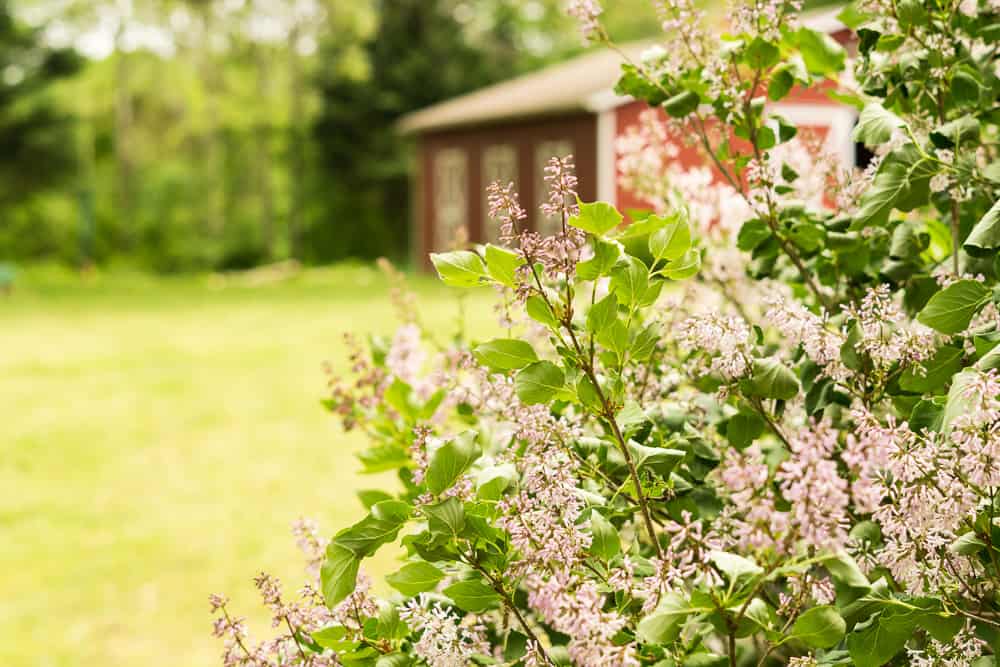
Love,










Dearest Friends,
I have read many articles on old fashioned skills and i have to admit, I love the idea of them all. I have made bread and cooked on the hearth, for I use to live in a place that the electricity would be disturbed regularly by either fires or weather. I have sewed clothes for my kids and have refurbished old things into new. That skill has never been a waste. I make my own dishwashing soap and laundry soap. I crochet, knit, and Loom different cold weather attire. The only old fashion home making skill I suggest, that hasnt been named that I know of is, a way to clean clothes. In the summer, I wash clothes by hand outside and hang them to dry. I could do inside during the winter, but I don’t. I am wanting to learn to can, which my sister is going to teach me. I homeschool my children as well. I use to garden but then we had to move. I will be starting a garden next year because my family of six is growing. But I do suggest a quick learning of these skills or just do them once for experience because you’ll never know when you’ll need them! In hard times of not knowing if there will be food on the table until payday or if the electricity will be turned on because of unforseen circumstances (yes, you payed the bill but stuff happens) it’s still good to know.
thank you liz! great advice for all! ❤️
I grew up on a farm. we raised all our food and meat. we milked cows and churned and made our butter. i learned to see at age 6 by hand and then graduated to a tredle machine which I still have. It is important to hand down these skills to our children. I taught my son to garden. can food and sew on buttons and simple mending. I am so blessed ti have learned these skills
These are all such great ideas! We just got our yard landscaped and with the dumpster rental finally our of our driveway, I can’t wait to get into gardening, making bread, and all the rest!
We live out in the woods and I’m still adjusting to keeping house without modern conveniences. I do make fresh bread during the winter to help heat the house and as for the history aspect I have a recipe book that I picked up at Michaels and I’ve been adding the recipes we make most often for my kids when they grow up.
It is a very charming list! It makes me happy to see more people returning to doing these things. I would like to add a couple suggestions. In the old days, wasting nothing was very important. Today, we are terribly wasteful! One of the things we waste a lot of is food, because we have forgotten how to store things well. Canning and dehydrating is all well and good, but if you have a garden, you should know how to keep your potatoes, cabbages, squash, carrots, onions, and other items for a long time without canning, freezing, or other means. We don’t even know how to keep the food well that we buy from the store! Take those mushrooms out of the container they come in and put them in a brown bag. Put a paper towel in with your lettuce. Take the potatoes out of their plastic bag and store them in a dark, cool, place. Learn how not to over-buy and how to use up what you have before it spoils. Everyone used to know how to keep food longer and to use up leftovers, peels, they would save fats off of meat, etc. They wouldn’t can everything because they didn’t have the time!
Another old skill that I use a lot myself is that of repairing, mending, refinishing, and re-using (or “upcycling”). In our easy-buy, easy-toss culture we have forgotten these skills, but they are just as useful today and so important for the planet and for our budget. Take shoes, for instance. I’ve learned how to care for my shoes regardless of the type of shoe, and they last twice as long or longer, while still looking and feeling good. Sewing from new fabric, as mentioned, can be expensive these days. On the other hand we can take an old pair of jeans and re-cover our ratty looking oven pads and make them beautiful. Making a braided rug from our old clothes is still practical. We don’t need new fabric to make a quilt top, beeswax wraps, or many other items for the home. My home is furnished mostly with second-hand furniture that I have restored. By caring for our possessions we add value, and that is a forgotten skill.
Thank you so much for writing this article and encouraging others!
I know how to do many of the “old-fashioned” skills. However I think that too many today have this idea that 100 years ago everyone did all of them. That would have been the 1920’s when my parents were born, both in cities, and neither family grew most of their food. They had a fruit tree or two, grew some tomatoes and cucumbers, but that was about it. Neither family made their own soap. That skill is from way further back in time. Store bought soap was so much nicer that women stopped making their own, which was time consuming, smelly, and produced a soap that wasn’t very nice. Sure it was probably cheaper, on a farm, where you butchered animals and had wood ash, but in the cities why bother.
My favorite skills are cooking from scratch, including bread baking, and sewing. Those three have saved me the most money and been the most satisfying over my 33 year marriage raising five children. I’m glad that more people are learning these skills. There is great satisfaction in creating!
I enjoyed reading this! A few years ago, I had a homemaking schedule much like this one. Life happened and I got away from it. This was a pleasant reminder that I want to get back to using something like this. I loved knowing basically what I was doing each day. Since then, my boys have grown up. We have adopted a girl who is now 17, about a year and a half ago, and we homeschool her too. I need to get back to doing this as I want her to know these things as well. Thank you for this!
I found so many interesting things in this post. I have been eager to turn my brown thumb into green and enjoyed the tips you provided here. I love the idea of bringing back these skills that are being lost. Thank you for inspiring me!
thank YOU tara! good luck on your new journey 🙂
Sewing clothes is definitely not a money saver any more. When I started my first job, I was able to run up five simple outfits for what in today’s money would be about $15 each. With the cost of fabric, patterns and sewing accessories like zippers and buttons that would easily be $35 now. Being able to mend and alter clothes, on the other hand, can save a tiny fortune.
good point about mending. I do think that it you get much higher quality clothes when you sew them though (well I don’t because I’m terrible at it, but you probably do!) 🙂
Enjoyed reading your information . Do you remember the name of a woman author who wrote about basic homemakng skills? She wrote about preserving, candel making,
Essential oils, etc. she was very creative.
First name might have been Prudence.
Thanks
hmm I don’t know. I do have a very old and wonderful book by a woman named Janet chapman called “how to live on nothing and have plenty”. you might enjoy that one 🙂
Thank you, Katie! This is really helpful, and I will take full advantage of all the links you added. Though I am 45 and working full time, I am doing everything on your list apart from soap making – which I really want to try some time!
that’s so great to hear Bianca! you must love to be busy 🙂 (I do too)
Thank you for simply breaking it down for me.
This is such a great list. Thank you!
glad you enjoyed it Michelle!
I’m 65 and have done all of these things except making soap, but I can weave and knit. I wasn’t taught these things growing up but learned them on my own. Now that we are in the middle of a pandemic I am truly grateful that I took the time to learn these skills. I live in the suburbs but you can still practice many of these things.
yes that’s wonderful! and I agree there is a lot of focus on homesteading, living off the land, etc. but almost all of this can be done wherever you live!
Hi Katie,
This is a great post on vintage homemaking skills. I love the entry about making food from scratch. Many people don’t know that you can make your own mayonnaise or spice blends. Definitely a money saver. Not to mention, think how much healthier the U.S. would be if we practiced these things. Thanks for sharing.
Maybe because I’m 78, I have done all these things. One of my daughters’ called me a few years ago and congratulated me on how “green” I was being when she was young. I made our yogurt, ground our wheat and made bread, grew our sprouts and even used TVP (texturized vegetable protein) in place of some meat. Froze or dried extra garden produce, etc. Told her it wasn’t being “green”, it was frugal!! We had 7 kids.
Yes isn’t it interesting how it’s coming back in style but for different reasons!
Love this post Katie!! ???? I love romanticizing the past and it’s so fun to try and revive some of those lost skills. I am thankful for modern conveniences! But I really do enjoy the challenge of living a little less modern ???? I can’t wait to try more of the things on this list. I’d love to spend time on one at a time and get really good at it instead of dipping my toes and moving on. Anyways!! Such a great post and so many awesome resources. Thank you!
Great list Katie! It’s true, convenience foods and the luxury of grocery stores sure has made it easy to neglect these skillls!
This is such a wonderful list. I am quite lacking in most of these skills but would love to learn more about cooking and baking for sure.
I love this list and your blog. I was raised by working parents in the 90s and I don’t have a lot of these homemaking skills. I’ve been home with my sons for three years now and finally feel like I’m approaching this list. The first three years at home were lived in survival mode and now I’m cooking, working out, and organizing. We live in the country-side of suburbia, where we have sidewalks but I can see a barn and a cow from the backyard.
I’m going to try some of this list. Thank you for your encouragement and inspiration.
That’s such a great point about life with very little people being all about survival mode! Thank you so much the comment. ??